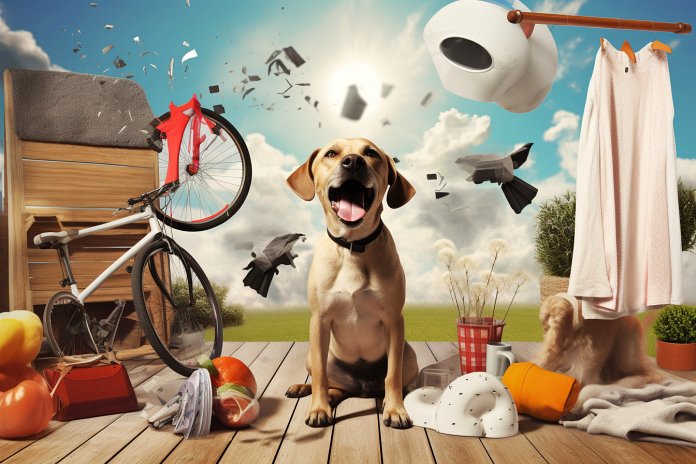
Life is a rollercoaster with unexpected events that can alter our perception. Dogs, like humans, can have phobias that make them anxious and fearful. Signs of phobias in dogs include hiding, whining, panting, howling, pacing, yawning, and drooling. Phobias can be caused by past traumatic experiences or genetic predispositions. Dogs are impressionable and can pick up on their owners’ reactions, which can contribute to their fears. Dogs can be genetically predisposed to certain phobias, such as thunder phobia, and certain breeds may be more prone to phobias. Stress can also contribute to the development of phobias in dogs. It is important for owners to provide a safe and positive environment for their dogs and seek professional help if needed.
“Life is a rollercoaster of highs and lows, and for dogs, it includes a glossary of phobias that make them anxious and fearful.”

Tips & Things to Know
1️⃣ Recognize the signs of phobias in your dog: Some common signs include whining, cowering, panting, howling, pacing, yawning, drooling, hiding, becoming aggressive, and being fearful of certain situations or objects.
2️⃣ Understand the potential causes of dog phobias: Phobias can be caused by past traumatic experiences, such as being locked in a crate or being abandoned. Genetics and breed traits can also contribute to phobias, as well as the influence of their human guardians’ reactions to certain stimuli.
3️⃣ Use positive techniques to help your dog overcome their phobias: Desensitization techniques, such as gradually introducing your dog to the object of their fear, can be effective. Playing calming music or using pleasing scents can also help. However, it’s important to never punish or yell at a frightened dog, as this can worsen their fear and potentially lead to aggression. If the phobia persists, seek advice from a veterinarian.
Frequently Asked Questions, Answered ✅
1. Can dogs develop phobias?
– Yes, dogs can develop phobias due to past experiences or genetic predisposition.
2. What are some signs that my dog has a phobia?
– Signs of dog phobias can include whining, cowering, panting, howling, pacing, yawning, and drooling.
3. Why do some dogs have phobias?
– Dogs can develop phobias due to past traumatic experiences, genetic disposition, or being exposed to fearful situations during their critical learning period.
4. How can I help my dog overcome their phobia?
– Desensitization techniques, playing calming music, using pleasant scents, and counter-conditioning strategies can help dogs overcome their phobias.
5. What should I avoid doing when dealing with a dog with a phobia?
– It is important to never punish or yell at a frightened dog, as it can worsen their fear and potentially lead to aggression. It is also important to remain calm and confident, as dogs can pick up on our emotions.